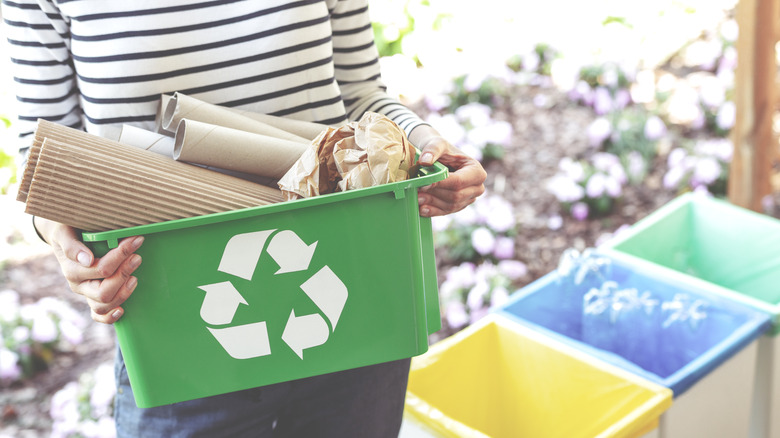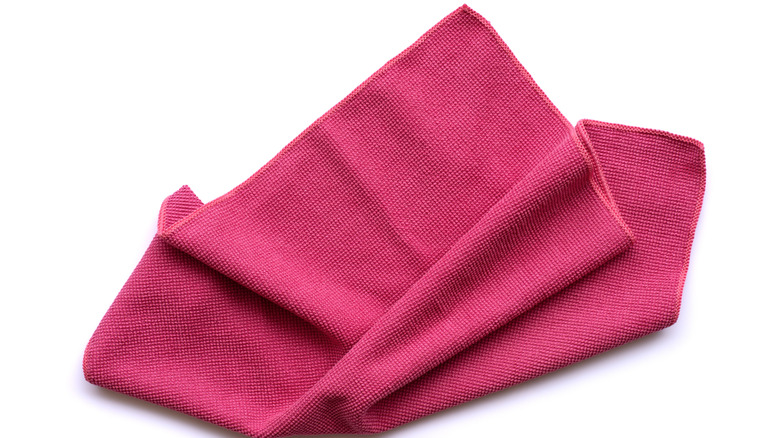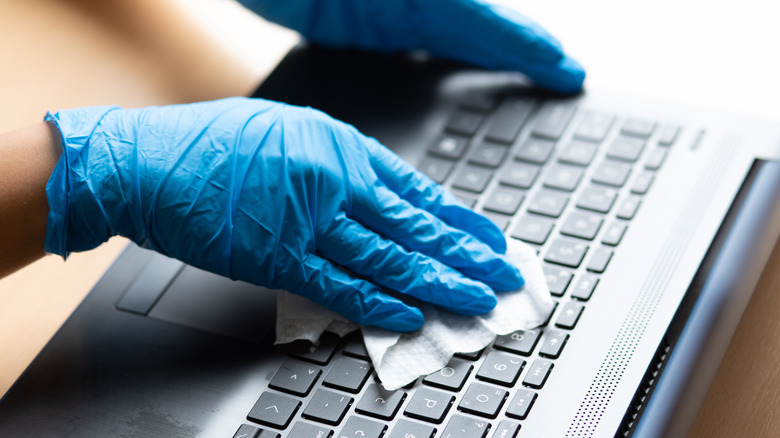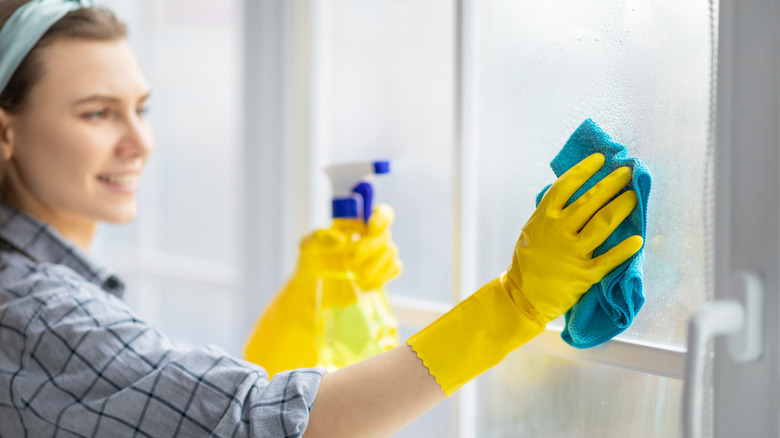5 Things That Will Make Cleaning Your Home Office A Breeze
If you had to summarize the state of the US workforce the last several years, it might go something like this: the pandemic forced many employees to work from home. Some have returned to the office while some have remained home-based. In fact, the Bureau of Labor Statistics says that almost 25% of people worked from home as of February 2021, down from about 35% soon after the pandemic began in 2020.
The number of remote and hybrid workers — those whose schedules combine office work and home office work — continue to ebb and flow. For example, Apollo Technical quotes an Owl Labs survey that says about 90% of the people it surveyed expect to work from home one day a week while 80% plan to be home-based at least three days a week.
More numbers will take time to shake out once employers set firm post-pandemic attendance rules and employees decide whether or not to follow them. As researchers cull the ever-changing statistics, you can infer one sure thing: people who work from home — and you may be one of them — need a place to do that work. If it's not a self-contained "home office," then it's probably a designated work space. Either way, it's an area that needs to be cleaned, and these five ideas should help make the task easier.
Set up a paper sorting system
The sale of office furniture increased "massively" during the pandemic, Statista says, with the sales of office chairs, desks, shelves, and filing cabinets increasing between 30% and nearly 75%. No matter how tech-savvy you are, you probably accumulate your share of paper, too. This is why one of the best ways to keep your home office tidy is to gain control over paper before it takes control of you. It makes no difference if you're a "stacker" (piling all kinds of paper in one tall pile) or a "spreader" (creating a somewhat orderly but still haphazard river of paper that spills over most flat surfaces).
Real Simple says that three wicker bins can become your life preserver: label one "confront now" (though give yourself until the weekend to empty it); label another "recycle" and pitch the contents on your recycling day; and label the third bin "scrap paper" if the back side of the paper is blank.
The key to making the "bin system" work — and it can work — is to approach it with a sense of urgency. In other words, you can't allow yourself to procrastinate.
Keep your screen sparkling clean
Let those researchers catch up to the sheer number of people who work from home — full time, part time, or some of the time. In the meantime, like you, they're probably spending the lion's share of their time facing a computer screen that looks perfectly spotless. All it takes is a bright ray of sun to shine on the screen to shatter that illusion, revealing fingerprint smudges and dried residue from talking, laughing, coughing, and sneezing — and maybe an accidental splash of coffee.
You may protest that your hygiene habits would never result in a dirty screen. But you won't argue the housecleaning tip: purchase a bundle of microfiber cloths. They're soft, completely devoid of lint, won't streak, and are very affordable. Then get a plastic spray bottle, filling one-half with white vinegar and the other half with water, via Home Made Simple.
With that, you've just mixed what Healthline calls, "the ultimate multipurpose cleaning solution."
In addition to keeping your computer screen clear, the solution can be used on many things in your home office, except your keyboard, phone, any wood, and all that paper.
Put the moves on your keyboard
You may have a pristine computer screen, but the keyboard is probably another story. Even if you were to poke at the keys with pencils, dust, dirt, hair, and crumbs inevitably come to rest on the keyboard and, depending on the model of your computer, maybe between the keys.
Of course you're eager to press that microfiber cloth and vinegar solution into action. Like many people, you may become ever-more-impressed with its cleaning power as time goes on. But spare the vinegar-water solution — as well as any type of liquid — on a keyboard as it "doesn't mix well with electronics," HelloTech says. This may be an understatement, as Good Housekeeping says liquids can damage your keyboard or monitor and cause it to "short out altogether."
Family Handyman recommends a multi-step approach to cleaning a keyboard: first, lay down some paper towels to catch what's stuck inside the keyboard. Then unplug it or turn it off before tipping it from one side to the other until all the debris lodged inside falls out. Once you don't hear any more rattling noises, place the keyboard on a flat surface and clean around the keys. You can use a dry microfiber cloth, disinfectant wipe, or cotton swabs dampened with water. But let the keyboard dry completely before you plug it back in or turn it back on.
Don't forget your phone
If you're cleaning your home office, it makes sense to take a few extra minutes to clean your phone, too. You probably have seen people resort to all kinds of cleaning methods — from using a paper towel (which can scratch the screen) to their shirt sleeve (which can also scratch — and worse if the phone gets entangled with a button).
In all likelihood, fingerprints are probably your biggest phone challenge. They're not just hard to avoid but they're impossible since your skin is a virtual oil-producing machine. This oil — technically known as sebum — leaves behind telltale traces. It's unavoidable unless you wear gloves. Wiping the screen with a microfiber cloth will erase fingerprints with ease. Makeup stains — so common on phones that brush up against the face many times a day — are best removed with a damp cloth or a disinfectant wipe, CNET says.
Some items should never be used to clean a phone, including: kitchen, window, and products labeled as "all-purpose" cleaners, liquid and hand soaps, hand sanitizers, rubbing alcohol, and makeup remover. Even vinegar and water should sit out this round. But keep that spray bottle nearby. Given its value, it won't be long before you press it into duty again.
Keep your view clean and clear
If you're lucky enough to have a window in your home office, you'll want to keep it, as well as the blind that covers it, clear and clean. Vinegar and water will seem like it was invented for windows (as well as mirrors). It cuts through dirt and doesn't streak.
You can use the solution on plastic and aluminum blinds, too. Wood blinds require some planning. Zebra Blinds says you can use vinegar and water on wood blinds if you're careful to merely dampen a microfiber cloth with the solution and then dry the blind with another cloth immediately afterwards. As the company points out, wood and water make poor companions. In this case, pooled liquid could cause a wood blind to warp.
If you prefer to follow the better-safe-than-sorry rule, use vinegar and water on your window. Then continue to breathe easy by using only a dry microfiber cloth on a wood blind. Basically, you're dusting, and if you do so at least once every two weeks, you should be able to easily remove surface dust. You'll want to — to let the outside breezes indoors and to remind you that cleaning a home office can be a breeze, too.





